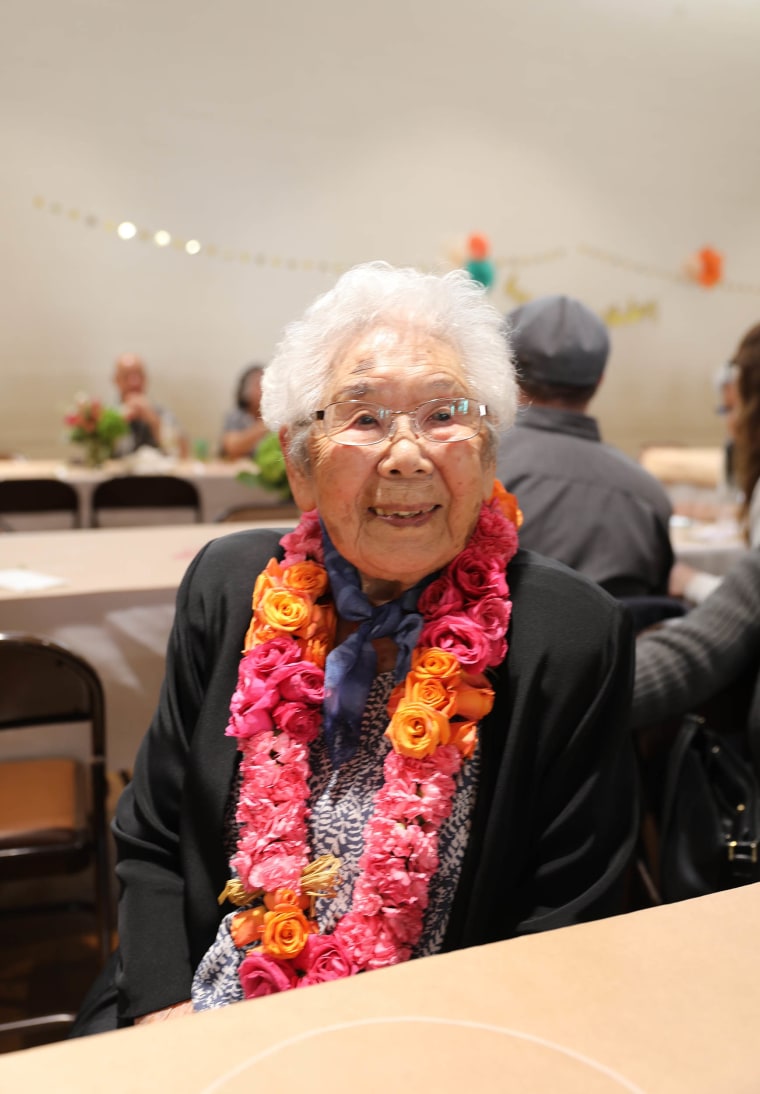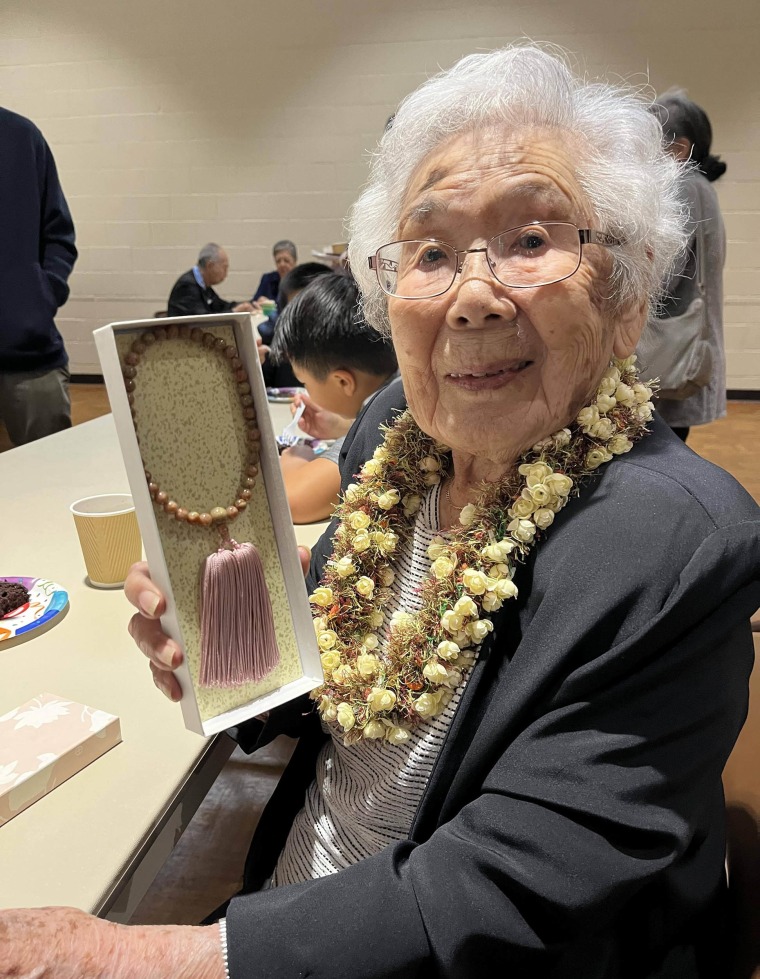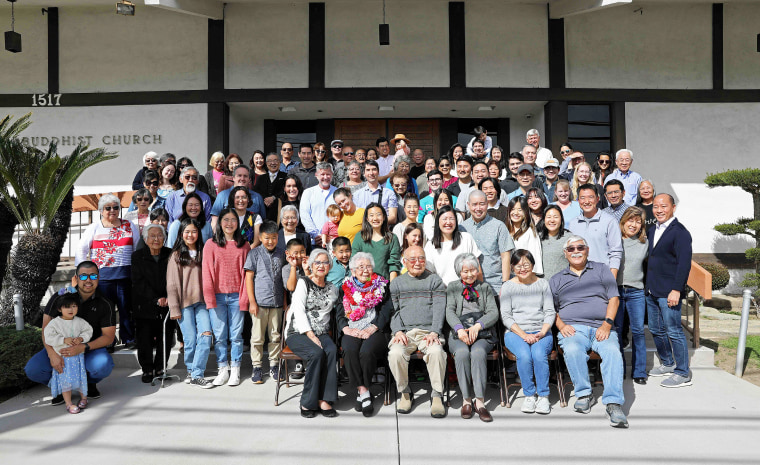With 110 years of life behind her, Yoshiko Miwa isn’t going to wallow in the negative, and she doesn’t want you to either.
The oldest living person of Japanese descent in the United States, according to the Gerontology Research Group, Miwa prefers to focus on the times when she was happiest. She’s lived through the Spanish flu, prohibition, Black Tuesday, World War II, and the losses of her parents, siblings and friends, and still the supercentenarian’s go-to piece of longevity advice is: Don’t dwell.
Miwa is part of the nisei — the second-generation Japanese Americans sent to internment camps during World War II — who often say “gaman,” which translates to “enduring the seemingly unbearable with patience and dignity,” Alan Miwa, her son, tells TODAY.com. It’s often loosely translated to “perseverance,” “patience,” or “tolerance.”

These feelings, Alan Miwa suspects, are born from the resilience of many from his mother’s generation — who had much to endure. Shikata ga nai (仕方がない), a Japanese phrase meaning, “It cannot be helped,” or, “Nothing can be done about it,” is a common saying among them, too, he adds.
Yoshiko Miwa was born Yoshiko Tanaka on Feb. 28, 1914, in Guadalupe, California, to Japanese immigrants. She was the fifth of seven children. When her mother and infant brother died in 1919, her father struggled to care for his family and tend to the farm he owned. So Yoshiko Miwa and her siblings were sent to live at the children’s home founded by their parish, Guadalupe Buddhist Church.
She went on to graduate from Santa Maria High School in 1932, and she studied business at the University of California, Berkeley, graduating in 1936. She married Henry Miwa in 1939.
During the Second World War, the pair and their families were sent to Poston Internment Camp in Arizona before relocating to Hawthorne, California, after the war. When they, along with many other Japanese people, had difficulty finding work upon their release in 1945, her husband founded a plant nursery business, and in 1963, Yoshiko Miwa got her nursing license.
Yoshiko Miwa has three sons, 10 grandchildren, 20 great-grand children and one great-great-grandchild.

These days, Alan Miwa says she’s in good health and lives in a care facility, where she gets her hair done weekly and attends church services on Sundays.
In addition to a positive spirit, keeping your mind and body active is the key to a long life, Yoshiko Miwa has said in the past. Ahead she shares a few other aspects of her life that she believes have led to her longevity.
She keeps an ever-expanding roster of hobbies
When Yoshiko Miwa retired, she'd walk 4 miles each morning. In 1990, at 76, she walked a 20K as part of the March of Dimes Walkathon. She’s an avid reader, she practices ikebana (flower arranging), sumi-e (Japanese ink art), sashiko (Japanese stitching), sewing, furniture refinishing and reupholstery.
These days, though, her favorite activity is sleeping, she tells TODAY.com via email.
She wrote an autobiography
After taking a writing course, Yoshiko Miwa penned an autobiography. In it, she recalls her travels to Rome, Japan, Paris and Niagara Falls. She describes life in the children’s home and the long walks to school, her siblings and her childhood with her parents.
“We had a big pasture for the horses and cows to graze on,” she wrote of her family’s farm her in autobiography. “Some days, my sister and I would wander around the pasture to pick wild violets that grew there.”
She loves to eat noodles
Yoshiko Miwa’s a fan of any kind of noodles, eating them every day. “When I was in the children’s home, the cook used to make noodles and I used to love them,” she says. “Today, I like spaghetti, udon, ramen, soba and any other kind of noodles.”
Her faith energizes her
Yoshiko Miwa is grateful to Rev. and Mrs. Issei Matsuura of the Guadalupe Buddhist Church, who took her in when her mother died of the Spanish flu.

Yoshiko Miwa was 4 years old when her father turned to the church for help. “The church then started a children’s home and taught us Buddhism, Japanese language, Japanese culture and responsibility,” she recalls. “I’ve always been indebted to Rev. and Mrs. Matsuura.”
... And her family does, too
The Miwa family travels together and hosts reunions. “I’ve been fortunate that my sons, my grandchildren, my great grandchildren and relatives have always been there for me,” says Yoshiko Miwa.
“Because my mother died so young, I have never enjoyed the warmth and love of a family unit,” she wrote in her autobiography. “Later, when I had my children, I keenly felt the wholesomeness of a complete family.”